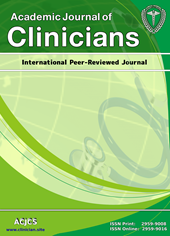Clinical and Pathogenetic Mechanisms of Development of External and Internal Secretory Insufficiency in Chronic Pancreatitis
Keywords:
Chronic Pancreatitis, Secretory Insufficiency, Alcohol AbuseAbstract
Chronic pancreatitis is a complex problem of clinical therapy and surgery. Despite progress in the diagnosis and treatment of CP, it still leads to severe complications and in some cases is fatal. The prevalence of CP varies from 0.4 to 5%. In 70-80%, the etiological cause of CP is alcohol abuse. CP is a polyetiological disease, its development requires the simultaneous impact of several causes. These include external toxins, metabolic changes, immune-mediated factors, congenital and acquired stricture of the pancreatic duct, and others. A significant contribution to the modern understanding of the pathogenesis of CP was made by the discovery of genes for hereditary pancreatitis. Each individual factor should be considered a risk factor. Some of them, without being damaging, reduce protective properties, others affect several pathogenetic links, for example, smoking and alcohol consumption. Intrapancreatic activation of pancreatic juice enzymes as a result of regurgitation of bile and duodenal contents into the pancreatic ducts is important in the development of CP, which is more often observed in cholelithiasis, biliary and duodenal hypertension. An aggravating circumstance is a decrease in pancreatic enzyme inhibitors. CP is quite often the outcome of acute pancreatitis, the transition of which to the chronic stage occurs as a result of impaired duct patency (stenosis, stones, pseudocysts) and the fibrosing process in the pancreas.





